AMD Radeon HD 7870 GHz Edition & Radeon HD 7850 Review: Rounding Out Southern Islands
by Ryan Smith on March 5, 2012 12:01 AM ESTMeet The Radeon HD 7870 & Radeon HD 7850
For today’s review AMD sent over a 7870 and a 7850. Both are built on the 7870 reference design, so the cards are functionally identical except for the configuration of their respective GPU and the number of PCIe power sockets present.
For retail cards this will be very similar to the 7700 series launch, with partners doing semi-custom cards right away. In fact among the list of cards AMD sent us only Club3D will be using the complete 7870 reference design, while everyone else will be using the reference PCB along with their customary open air coolers. The 7850 will be even more divergent since AMD actually has a different, shorter reference PCB for these cards. Consequently our 7850 has very little in common with retail 7850s when it comes to their construction.
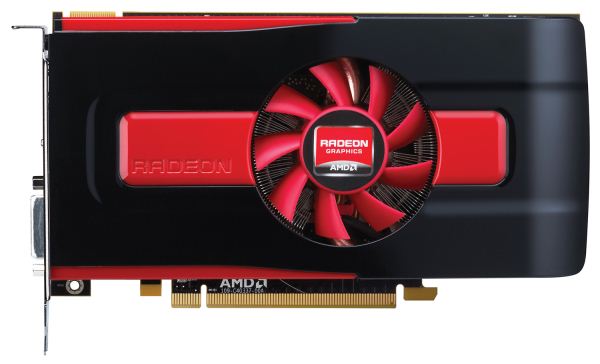
The Radeon HD 7850 Reference Design - Only Sampled To Partners
Starting as always with the cooler, the 7870 reference design is effectively a smaller version of the 7970 reference design. Here AMD is once again using a blower design with a slightly smaller blower, shrouded in the same hard red & black plastic as with the 7900. Underneath the shroud we find AMD’s heatsink, which utilizes a copper baseplate attached to 3 copper heatpipes, which in turn run into an aluminum heatsink that runs roughly half the length of the card. This is fairly typical for a blower design for a sub-200W card, but again almost all of the retail cards will be using a completely different open air design.
The 7870 PCB itself runs 9.5” long, with an additional .25” of shroud overhang bringing the total to 9.75”. Our card is equipped with 8 5GHz 256MB Hynix GDDR5 memory chips, the same 5GHz chips that we saw on the 7700 series. For the 7870 power is provided by a pair of 6pin PCIe power socket, while the sub-150W 7850 uses a single socket. Both cards feature a single CrossFire connector, allowing them to be paired up in a 2-way CrossFire configuration.
Meanwhile for display connectivity AMD is using the same configuration as we’ve seen on the 7900 series: 1 DL-DVI port, 1 HDMI port, and 2 miniDP ports. Interestingly, unlike the 7900 series and 7700 series there is a set of pads for a second DVI port on the card, and while AMD doesn’t make use of them at least one XFX card will. The 7800 series as the same display configuration options as the 7900 series though, so while it can drive up to 6 monitors it can only drive 2 TMDS type displays at once, and if you want to drive a full 6 monitors you’ll need a MST hub.
Finally, I wanted to touch on marketing for a bit. We typically don’t go into any detail on marketing, but with the 7800 something AMD did caught my eye. One of AMD’s marketing angles will be to pitch the 7800 series as an upgrade for the 5800 series; AMD doesn’t typically pitch cards as upgrades in this manner, and the 5800 comparison is especially odd.
At 2.5 years old the 5800 series is no longer the video card king but it’s also not particularly outdated; other than tessellation performance it has held up well relative to newer cards. More specifically, the 7800 series performance is roughly equal to the 6900 series, and while the 6900 series as a step up from the 5800 series it was not a massive leap. With its $350/$250 MSRP the 7800 series has common pricing with the 5800 series, but at only 20-40% faster than the 5800 it’s not the kind of step up in performance that typically justifies such a large purchase. Of course AMD’s conservative pricing has a lot to do with this, but at the end of the day it’s odd to call the 7800 series the upgrade for the 5800 series when the 7950 is the more natural upgrade from a performance perspective.


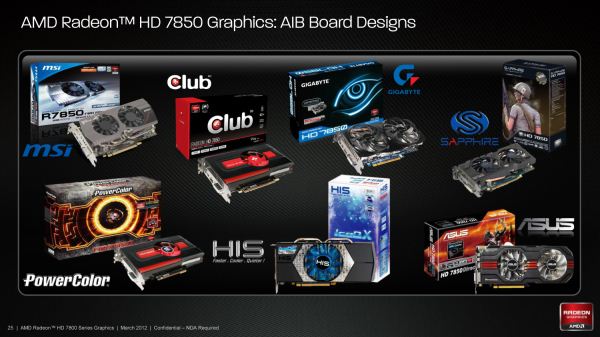
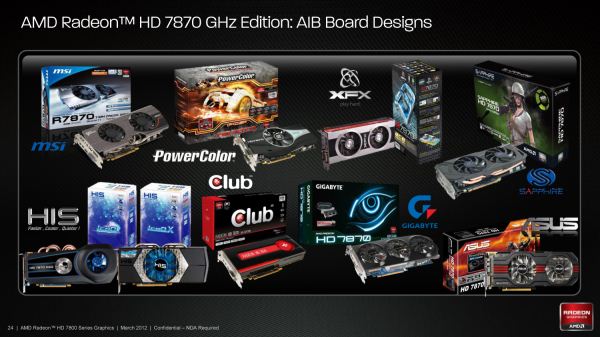

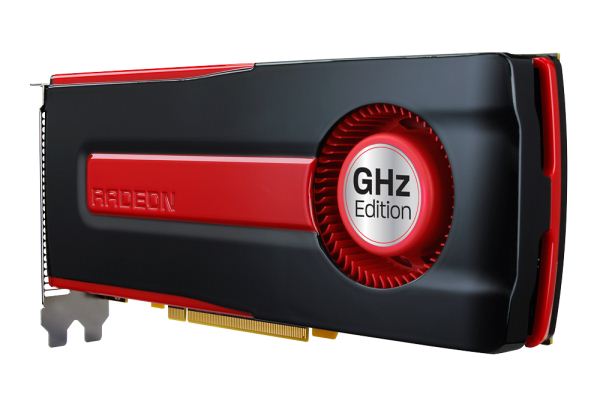












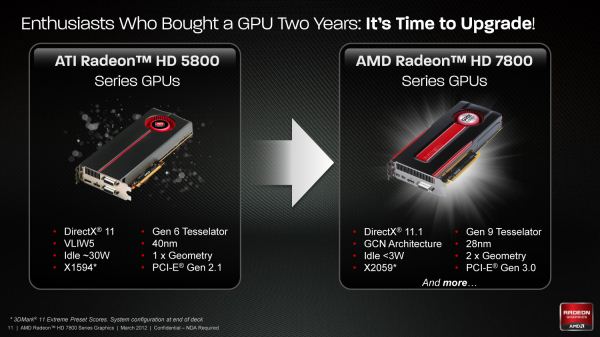








173 Comments
View All Comments
Zumzifero - Monday, March 5, 2012 - link
I agree with you about some of your statements but not all.Price are too high and everybody seems to agree.
Then, if you are just aiming at performances I think you may find good use for some of those 69x0 still on shelves.
These 7xx0 cards have some use anyway: 7750 are great for all those budget HP and similiar you can buy in mega-store. You can play decently phasing out hose horrendous GeF 320 you get inside.
About apps supporting AMD vs Nvidia, I' may point out that recent NV drivers are castrated by choice with everything supporting a super expensive Quadro line, meaning you may find yourself much more comfortable with an obsolete GF260 then with a GT560ti. This does not applies for AMD that (as fare as it lasts) is not jeopardizing our effort to actually "work" on a "non pro" rig. I doubt you'd really need an HD7970 for Solidworks or 3DStudio (if you do, better go with a pro card), but if you spend several hours on a PC with these programs, I guess you may find interesting stuff like the much despised HD7850, which can play games, video, multi monitor systems and professional apps without killing you with the energy bill.
HD7970 may not be a wonder in terms of raw power (albeit being almost as fast as a 6990 or a 590) but it actually draws less then previous generations while being so much faster.
Still, prices are high, which I don't like, but, would you be the CEO at AMD, how would you have behaved knowing that, until Nvidia comes out with it's line costumers have no alternatives for PCI 3.0 and DX 11.1? they know they will be able to lower these prices substancially if needed.
I'm a causal gamer, and an architect, and the programs I need are not Quadro or FirePro certified so I can happily live with mainstream graphic cards. I'm using a GTX560ti but I plan to build a new rig based on Ivy Bridge 3770, ITX 2HD Raid 1, 2 SSD (one for HD caching) inside quite small Lian Li P08...
Since IvyB is not out yet I guess I'll wait and see what nVidia has to offer, but how bad do you think a 7850 would be in it?
Last but not least, US is not the world, and AMD sells globally: do you know how much higher are energy bills outside your country? You can find nfo on this site if you are interested.
Given the nVidia trend since GT200 serie (meaning horrendous power/speed ratio), I don't held my finger crossed about Kepler. I hope I'm wrong.
chizow - Monday, March 5, 2012 - link
Its not about the % of people who own those cards, its that those are the people who would most likely be in the market for one of these GPUs since they've already bought in that range.Anyone who bought a GPU in the last 24-30 months has very little reason to buy one of these cards as its really not offering any significant increase in performance that they couldn't have gotten at the same price points over the last 24-30 months. That's the problem.
Sure there's some power consumption benefits from these new parts, but that's usually just a by-product of the die shrink that's a bonus that's far lower concern than actual price and performance.
For someone buying their 1st GPU today yeah it makes more sense to buy this over an older part, but for the rest of the market, there's really no progress here with AMD's 7-series line-up.
Alpert - Tuesday, March 6, 2012 - link
I registered a account here just to reply to you, now don't you feel special. Well you should because you can't see that the 7870 is priced $200 below that of a GTX580. So I don't understand what you mean by saying"price/performance. Southern Island has been a huge disappointment so far".
That don't make sense, My only complaint is a miserable $20 that is the cards being $20 over priced.
Zoomer - Wednesday, March 7, 2012 - link
SI is about compute, not raw gaming performance. That's where much of the transistor budget went.The deep idle state probably didn't help as well. Wonder how much area that took. I doubt 7W in a desktop environment matters, as even in a crossfire setup, that's just 14 W. For laptops, sure. For dense compute clusters, maybe, if it's going to be idle.
steambuns - Monday, March 5, 2012 - link
Never expected them to be this fast!!they have not shown up with online stores yet, cannot wait to pick one up
$350 for the speed of $500 cards works for me.. 7870 in my future plans.
venomblade - Monday, March 5, 2012 - link
The 7870 looks perfect for me! Was kinda hoping for a $300 pricepoint, but for this kind of performance I'd be more than willing to shell out a bit more. And wow looking at the skyrim benchmarks when the vram made the fps crash was just daunting. At first glance I was wondering how could the 570 and up be two times faster than a 560 ti in Skyrim. Also, not a big deal but you put "GTX 570 ti collapses beyond 1920."jjj - Monday, March 5, 2012 - link
This is not even funny and the sad part is that AMD is being nasty and pullng the 69xx series since they were a better deal (the 6970 started at 300$ after price cuts and/or MIR).The entire 7xxx prod line is a huge dissapointment price wise,for now.
tynopik - Monday, March 5, 2012 - link
why don't you use the gpu benchmarks that people actually care about? bitcoin, F@H, even RC5-72also various elcomsoft and other password recovery tools use the GPU
Ryan Smith - Monday, March 5, 2012 - link
Hi tynopik;We've actually considered all of those programs, but we've rejected them for various reasons.
Bitcoin: Hand optimized assembly that works poorly with brand-new cards
F@H: Works poorly with new AMD cards. Also, difficult to benchmark
RC5-72:Hand optimized assembly that works poorly with brand-new cards. Also, it's basically a proxy test for a fast ROTL operation.
Password Tools: Basically a proxy test for having many simple shaders, and a proxy test for a fast ROTL operation
Basically with the possible exception of F@H, all of those programs are the same type of edge case for AMD's old generation hardware. Which is not to say that they're not important, but we don't pick our compute benchmarks just to evaluate the relative performance of video cards. We also pick them to better understand their architectures and their strengths & weaknesses; those benchmarks would not have told us much of value about Fermi or GCN.
kreacher - Monday, March 5, 2012 - link
I was also considering an upgrade from my 5850 and was waiting for 7800 series. Really disappointed to see the small performance gains after two generations.